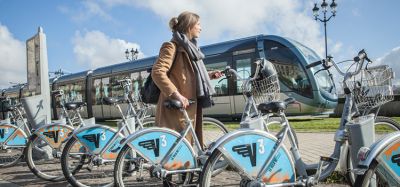What kind of collaboration does there need to be between operators, authorities and third-parties to ensure MaaS becomes a widespread reality?
- Like
- Digg
- Del
- Tumblr
- VKontakte
- Buffer
- Love This
- Odnoklassniki
- Meneame
- Blogger
- Amazon
- Yahoo Mail
- Gmail
- AOL
- Newsvine
- HackerNews
- Evernote
- MySpace
- Mail.ru
- Viadeo
- Line
- Comments
- Yummly
- SMS
- Viber
- Telegram
- Subscribe
- Skype
- Facebook Messenger
- Kakao
- LiveJournal
- Yammer
- Edgar
- Fintel
- Mix
- Instapaper
- Copy Link
Posted: 17 October 2017 | Intelligent Transport | No comments yet
As part of our Mobility-as-a-Service In-Depth Focus, Intelligent Transport asked an expert panel: What kind of collaboration does there need to be between operators, authorities and third-parties to ensure MaaS becomes a widespread reality?


Daniel Chick, Technical Director, Zipabout:
Most MaaS schemes currently focus on integrating multimodal transport on a single payment mechanism. While this is simple to deliver somewhere like Helsinki or London, where the transport network is already integrated, the reality is that elsewhere most networks are highly fragmented.
The transport data that successful MaaS programmes require is often incomplete and unreliable thanks to asiloed approach to data across multiple operators and service providers.
Moreover, the current open data policy whereby operators ‘outsource’ their customer engagement to suppliers through customer information apps has only served to sever the relationship between vital operators and passengers. Operators rarely have any direct engagement with customers, and often no idea who is travelling on their services.
As it stands, MaaS has the potential to worsen this situation, with MaaS providers owning the entire relationship, leaving the passenger with no incentive to feed back any data to the actual provider of the physical transport service.
The key to MaaS is understanding that sharing data and integrating underlying information systems on one technology platform increases the value of everybody’s offering and opens the door to genuinely innovative intelligent transport.
Brian Masson, Director, Multi Modal Transport Solutions Ltd:
The success of any MaaS scheme will be dependent on the ability to get all stakeholders to work together. MaaS as a concept is based on the ability to meet user mobility requirements using one app to cover all modes of transport. It is essential that transport authorities provide flexible regulatory frameworks to encourage innovation across multimodal service delivery.
At the same time, authorities need to ensure that MaaS users are protected in terms of financial and safety issues. The responsibilities of MaaS providers, transport providers and authorities needs to be clearly defined to build confidence for users.
There are numerous issues to be addressed, such as distribution of revenues and negotiating contracts between operators and MaaS providers. Who will pay for MaaS providers’ costs? Will operators give up revenues, or will users have to pay a fee? Also, who is responsible if issues arise, the operator, authority or the MaaS provider?
Technology has made MaaS technically feasible, but success for MaaS providers will be defined by the ability to provide users with multimodal solutions at a cost that offers value for money when compared with existing solutions. The biggest challenge, as stated, will be getting all stakeholders to work together.
Related topics
Multimodality, Transport Governance & Policy
Issue
IT Issue 1 2017
Related organisations
Multi Modal Transport Solutions Ltd, Zipabout
Related people
Brian Masson, Daniel Chick








